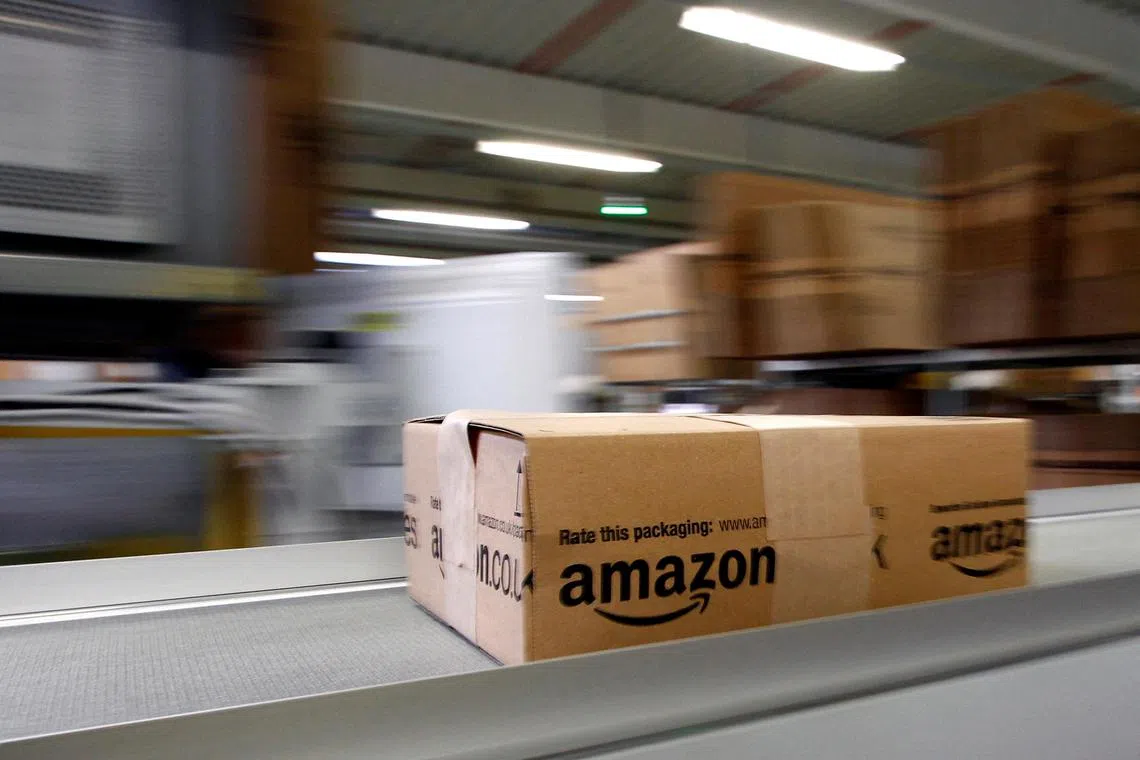Amazon says consumers are cautious and forecasts revenue below Wall Street targets
Sign up now: Get ST's newsletters delivered to your inbox

The after-hours stock drop came despite second-quarter profit and cloud computing sales that beat Wall Street estimates.
PHOTO: REUTERS
Follow topic:
Bengaluru - Amazon.com forecast current-quarter sales below estimates and said cautious retail consumers are seeking out cheaper options for purchases, sending its shares down 5 per cent on Aug 1.
The after-hours stock drop came despite second-quarter profit and cloud computing sales that beat Wall Street estimates.
Amazon’s chief financial officer Brian Olsavsky said in a call with reporters that consumers were being more cautious with their spending. “They are looking for deals,” he said, noting that lower priced products were selling briskly.
Chief executive Andy Jassy, on a call with analysts, said that customers were trading down on price when they could.
Amazon’s online stores sales rose 5 per cent in the second quarter to US$55.4 billion (S$73.8 billion), compared with a 7 per cent gain in the first quarter.
One analyst said the softer retail sales were driving the post-market shares sell-off.
Mr Jassy said in a release announcing the results: “We’re continuing to make progress on a number of dimensions, but perhaps none more so than the continued re-acceleration in AWS growth”, referring to Amazon Web Services.
Mr Olsavsky told reporters it was difficult to make predictions for the third quarter because events like the US presidential election and Olympics in Paris were distracting consumers. He said Amazon’s two-day discount sales event known as Prime Day in July was its “biggest ever” without providing specifics.
Like its competitors, Amazon is boosting capital expenditures to invest in infrastructure for and development of artificial intelligence (AI). Mr Olsavsky said spending in the first six months of 2024 was about US$30.5 billion, suggesting about US$16.5 billion in the second quarter.
The Seattle retailer is playing catch-up with rivals Microsoft, which partners with OpenAI, and Google, in developing its own so-called large language models that can respond nearly instantly to complicated queries or prompts.
It has rolled out a chatbot, dubbed Rufus, designed to help customers make purchasing decisions for specific purposes.
Both Google-parent Alphabet and Microsoft cautioned investors in July that expenses would remain elevated throughout the year to support developing pricey AI software and services. Investors took that as a signal that a payoff from the buzzy technology could take longer than originally hoped.
Amazon’s cloud business AWS reported a 19 per cent increase in revenue to US$26.3 billion for the second quarter, surpassing market estimates of US$25.95 billion.
The company expects revenue of US$154 billion to US$158.5 billion for the third quarter, compared with analysts’ average estimate of US$158.24 billion, according to LSEG data.
Amazon also missed estimates for advertising sales, a closely watched metric, as it ramps up competition with rivals Meta Platforms and Google. Sales of US$12.8 billion in the quarter compare with the average estimate of US$13 billion, according to LSEG data. The company earlier in 2024 began placing advertisements in its Prime Video offering for the first time.
Still, Mr Olsavsky said he was pleased with the advertising results. Those sales grew 20 per cent in the quarter. REUTERS

